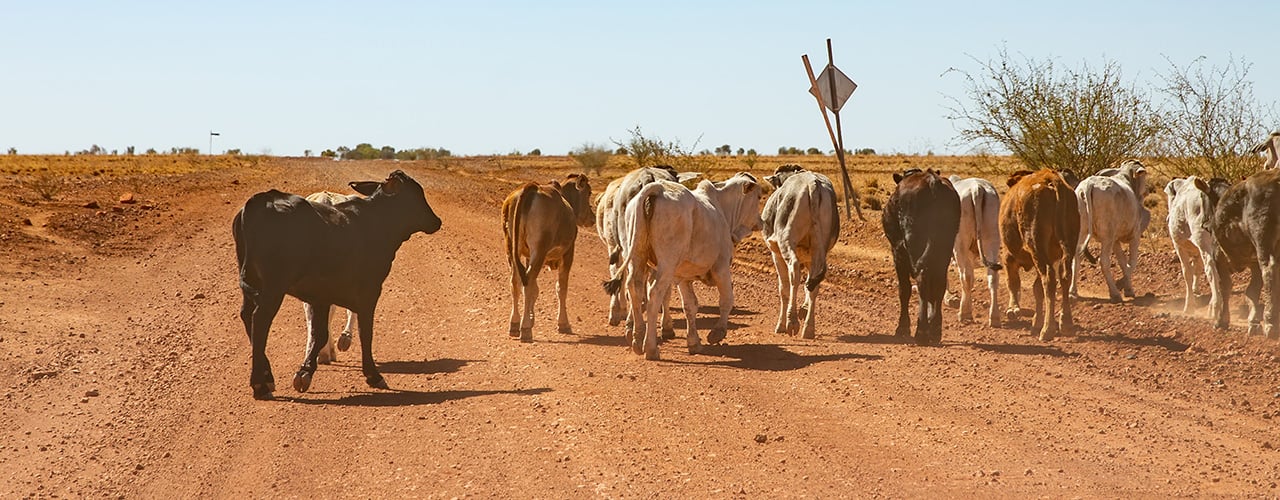The recent spread of foot-and-mouth disease (FMD) in Indonesia has raised the chances of an outbreak in Australia. A widespread outbreak of FMD in Australia would have severe impacts for Australia’s livestock industries. However, while the likelihood of an outbreak has increased it is still relatively low. Australia has comprehensive plans in place to help manage and minimise the impacts of an outbreak.
FMD is a highly contagious animal disease which has not been in Australia for over 100 years
FMD affects cloven-hoofed animals including cattle, buffalo, camels, sheep, goats, deer and pigs. It is rarely fatal in adult animals but causes severe production losses.
Australia is free of FMD has not had a case of the disease since 1872. While FMD has been endemic in several parts of Asia, Africa and the Middle East for some time.
The chances of an FMD outbreak in Australia have increased but are relatively low
In May, an FMD outbreak was reported in Indonesia and cases appeared in Bali in July.
The Centre of Excellence for Biosecurity Analysis assesses the probability of FMD outbreaks in the next five years. In June 2022, following detection in Indonesia, they assessed the probability to be 11.6 per cent. This was up from 9 per cent in their March 2021 assessment.
FMD most commonly spreads via close contact between animals. It can also be spread through infected animal products or contaminated clothing and footwear. Heightened biosecurity measures have been put in place with $9 million from the Australian Federal Government. This provided increased surveillance, biosecurity personnel, and education for travellers returning from Indonesia. Additionally, $5 million was committed to help control the Indonesian outbreak. This include the support for distributing vaccines.
Indonesia’s efforts to reduce the spread of the disease appear to be effective. Case numbers have reportedly declined from a peak in late June and vaccines are being administered at a rapid pace.
Australia has FMD response plans, but an outbreak would still have severe impacts
While the chances of an incursion of FMD to Australia are relatively low and measures are in place to mitigate the recently heightened risk, the impacts of an outbreak would be severe. Australia’s livestock sector has a gross value of production of $30 billion. ABARES modelling projected a direct economic impact of $80 billion over 10 years of a widespread FMD outbreak.
Size of Australian livestock industries in 2021/22
| Number of livestock | Gross value of production | Value of exports | |
| Beef cattle | 22.8m | $15.8b | $11.0b |
| Dairy | 2.3m | $4.9b | $3.5b |
| Sheep | 69.0m | $4.7b | $3.8b |
| Wool | $3.1b | $3.4b | |
| Pigs | 2.4m | $1.5b | $140m |
| Total | 121.5m | $30.3b | $21.8b |
Data source: ABARES
Australia has detailed, well-rehearsed FMD response plans to deal with an emergency outbreak. The Australian Veterinary Plan (AUSVETPLAN) is the central plan. It is managed by Animal Health Australia.
Under the AUSVETPLAN for FMD, following a diagnosis of FMD in Australia a national livestock standstill will be imposed. This would restrict the movement of all FMD-susceptible animals for at least 72 hours. After the national livestock standstill, outbreaks would be managed through “declared areas”. This allows for the disease to be contained and eradicated from where it is known to have been present. The primary means of eradicating an outbreak is the humane destruction of infected animals. The AUSVETPLAN includes a compensation package for stock losses associated with FMD. Australia also has an overseas FMD vaccine bank. This can be made available for use to manage an outbreak.
The detection of FMD in Australia would also likely lead to the closure of export markets for Australian livestock products. This outcome would have the most severe consequences for more producers. Domestic consumers may also have an aversion to consuming livestock products. Although there is no risk to human health.
Visit the below resources to find out more about FMD and what you can do to reduce the risk on your farm:
- Australian Department of Agriculture, Fisheries and Forestry: foot-and-mouth disease
- Information for livestock producers: Livestock producers - DAFF (agriculture.gov.au)
- Animal Health Australia: foot-and-mouth disease - Animal Health Australia
- AUSVETPLAN: Informing EAD Responses - AUSVETPLAN - Animal Health Australia
- Emergency Animal Disease Response Agreement (EADRA): Emergency Animal Disease Response Agreement - Animal Health Australia
- Meat and Livestock Australia: foot-and-mouth disease (FMD) and Lumpy Skin Disease (LSD) | Meat & Livestock Australia (mla.com.au)




